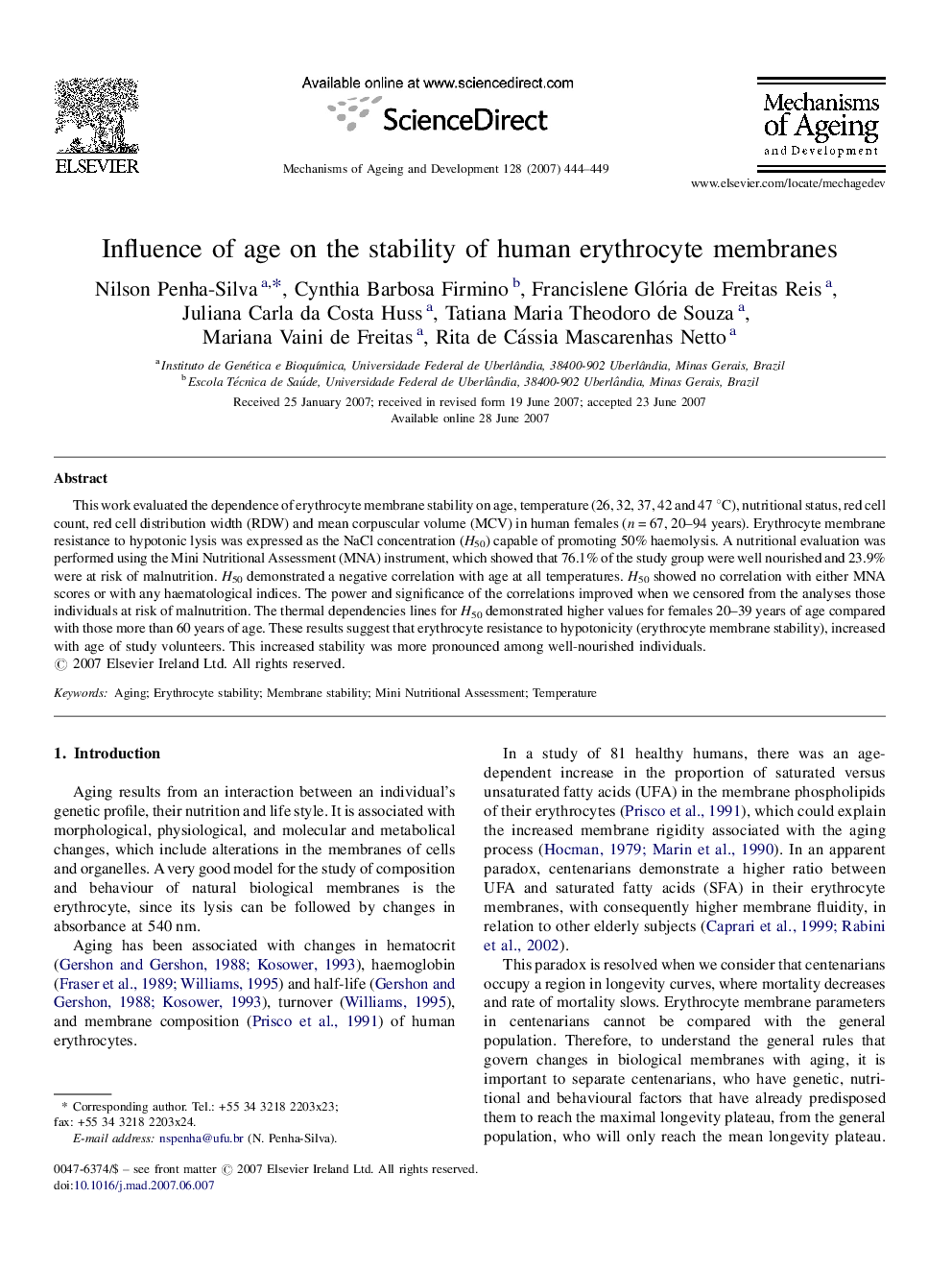| Article ID | Journal | Published Year | Pages | File Type |
|---|---|---|---|---|
| 1919679 | Mechanisms of Ageing and Development | 2007 | 6 Pages |
This work evaluated the dependence of erythrocyte membrane stability on age, temperature (26, 32, 37, 42 and 47 °C), nutritional status, red cell count, red cell distribution width (RDW) and mean corpuscular volume (MCV) in human females (n = 67, 20–94 years). Erythrocyte membrane resistance to hypotonic lysis was expressed as the NaCl concentration (H50) capable of promoting 50% haemolysis. A nutritional evaluation was performed using the Mini Nutritional Assessment (MNA) instrument, which showed that 76.1% of the study group were well nourished and 23.9% were at risk of malnutrition. H50 demonstrated a negative correlation with age at all temperatures. H50 showed no correlation with either MNA scores or with any haematological indices. The power and significance of the correlations improved when we censored from the analyses those individuals at risk of malnutrition. The thermal dependencies lines for H50 demonstrated higher values for females 20–39 years of age compared with those more than 60 years of age. These results suggest that erythrocyte resistance to hypotonicity (erythrocyte membrane stability), increased with age of study volunteers. This increased stability was more pronounced among well-nourished individuals.
